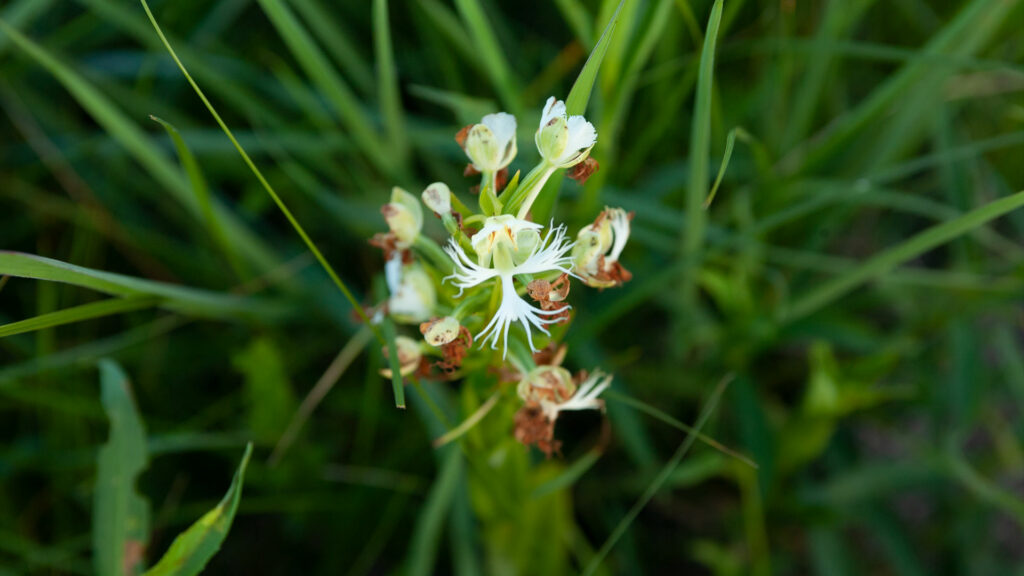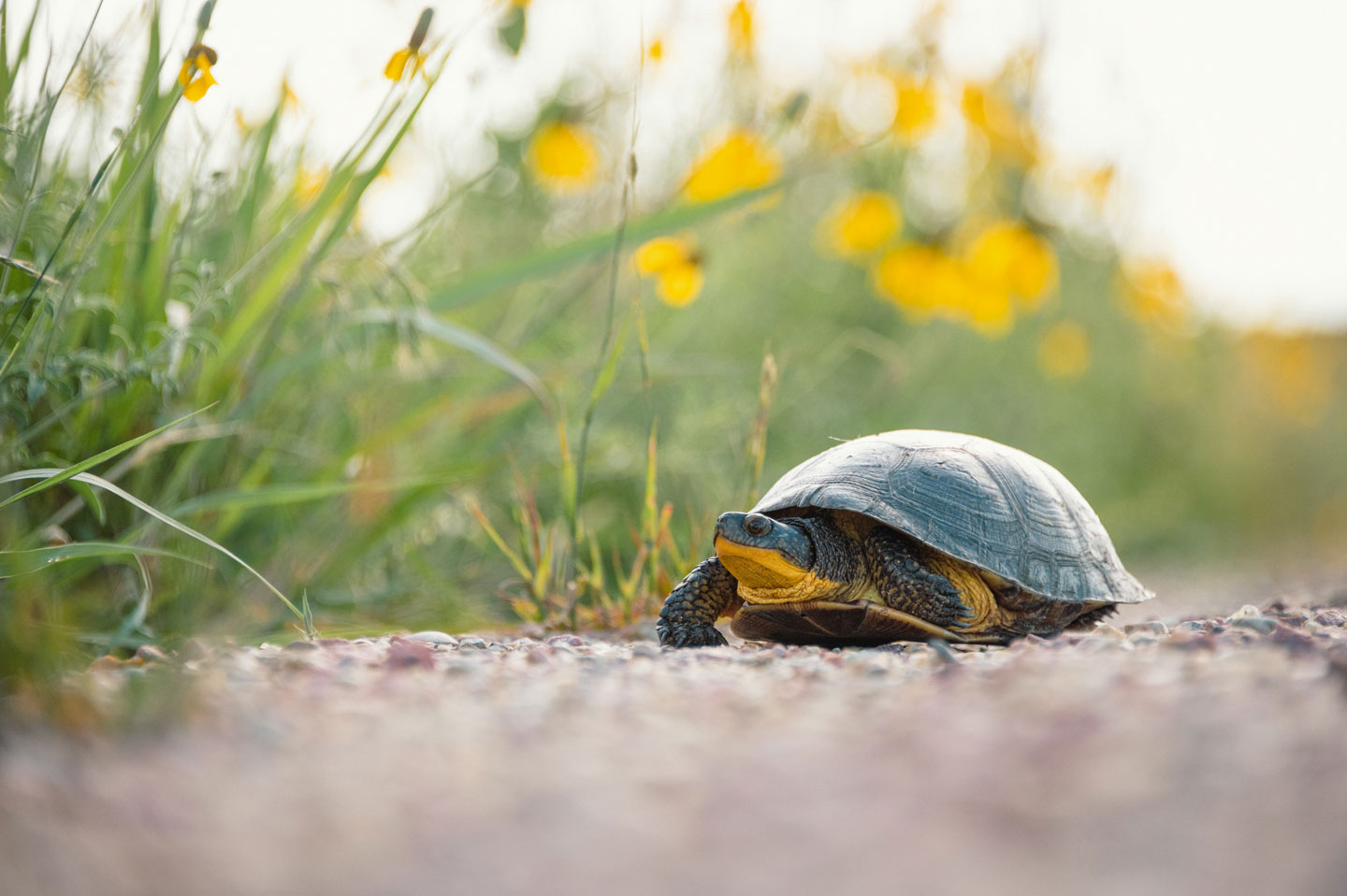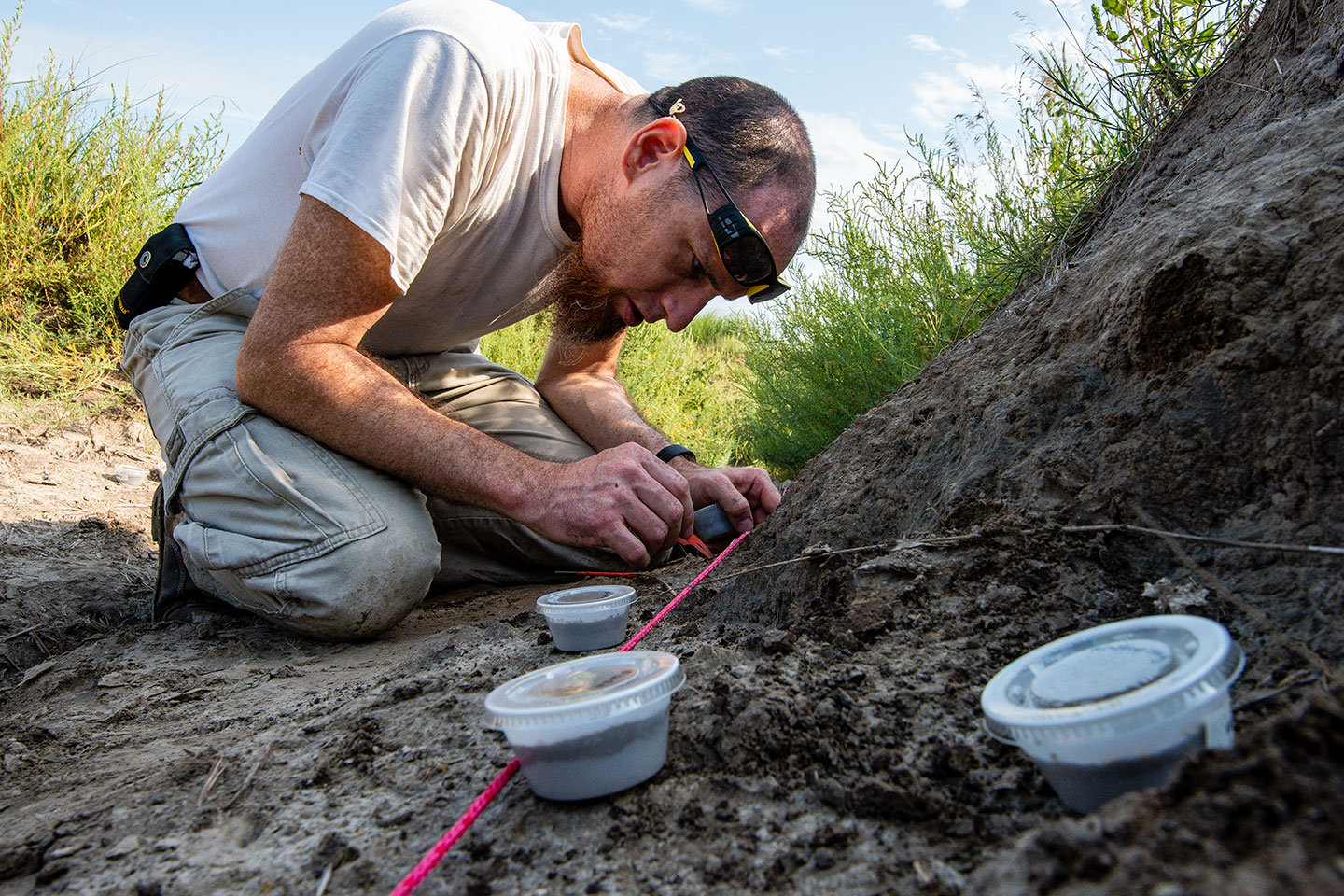Western prairie fringed orchid
Status: Threatened

The western prairie fringed orchid (Platanthera praeclara) is one of Nebraska’s rarest plants. This perennial grows from a fleshy, tuberous root and has a single stem with alternate leaves. The long leaves come together at the base of the stem and the veins are parallel. The western prairie fringed orchid can grow to 3 feet in height, but an average height is 18 to 30 inches.
The flowers form an open arrangement at the top of the stem. Approximately two dozen creamy white or greenish flowers are present on each stalk. The lower lip of the flowers is divided into three feathery and fringed lobes, hence the common name. Together with the upper petals and sepals they form a hood.
Range
The western prairie fringed orchid historically was found throughout the Tallgrass prairie region of the central United States. It was found from Manitoba in the north to Oklahoma in the south. In Nebraska, the western prairie fringed orchid grows in wet to somewhat drier prairies in eastern portion of the state and the Sandhills.
In Nebraska, the western prairie fringed orchid has experienced a 60 percent decrease in its range. It can be found in restricted areas throughout its historic range, although it is believed to be extirpated from Oklahoma and South Dakota.
Habitat
The western prairie fringed orchid can be found in the Tallgrass prairie landscape. In eastern Nebraska they are found in upland prairies and loess soils. In central and northeast Nebraska they occur in wet prairies and meadows. The western prairie fringed orchid can also be found in the sandy soils of sub-irrigated meadows in the Sandhills. While all these sites are different, they all contain Tallgrass prairie habitat and high soil moisture.
Population status
Declines in the orchid populations in Nebraska have been primarily caused by the conversion of native grasslands to cropland. Overgrazing, annual haying, exotic plant invasion (especially cool-season grasses and leafy spurge), developments and herbicide spraying are also threats. As a prairie species, the orchid evolved with grazing by native herbivores, and although orchids exist on moderately grazed grasslands, they cannot tolerate heavy grazing for extended periods.
Additionally, since the western prairie fringed orchid is so reliant on sphinx moths for pollination and seed production any threat to these insects, such as the use of insecticides, is a threat to the orchid. Loss of these important native pollinators may be impacting pollination and gene flow in this species.
The orchid is both a federal and state listed threatened species in Nebraska.
Management and outlook
This prairie wildflower has a delicate existence and requires active management. The western prairie fringed orchid can also benefit from prescribed fire as it can reduce competing exotic, cool-season grasses, reduce litter levels and set back encroaching woody vegetation from orchid habitat. The orchid is not impacted by fire as long as it is not conducted during the orchid’s prime growth and seed producing period.
Carefully planned grazing and invasive plant control is also important to effectively maintain and increase western prairie fringed orchid populations. However, these practices can have detrimental effects if they are not carefully implemented; proper grazing ensures under or overgrazing does not occur. Maintaining suitable habitat for the orchid’s pollinator, night-flying moths, is also critical to maintain orchid populations.
Conservation help
The focus of recovery for this species has been maintaining the habitat of known populations and providing the highest level of protection. The Nebraska Game & Parks Commission and the U.S. Fish & Wildlife Service are working together to monitor and identify populations and work with landowners.
Because the majority of this species occurs on private land, landowners can help conserve this species by enhancing their meadow and prairie habitats with the orchid. Nebraska Game and Parks Commission biologists and those of other agencies can help landowners develop management plans that benefit this species through grazing practices, prescribed burning and careful herbicide application.
Individuals can help by donating to conservation organizations, like the Wildlife Conservation Fund, that work to protect the species and conserve its habitat in Nebraska.
References
U.S. Fish and Wildlife Service. 2009. Western Prairie Fringed Orchid (Platantherapraeclara) 5-Year Review: Summary and Evaluation. 37 pp.
Western Prairie Fringed Orchid Fact Sheet. U.S. Fish and Wildlife Service, Ecological Services Field Offices in the Upper Midwest. 2011.
Online Field Guide: Western Prairie Fringed Orchid. Missouri Department of Conservation. 2012.




